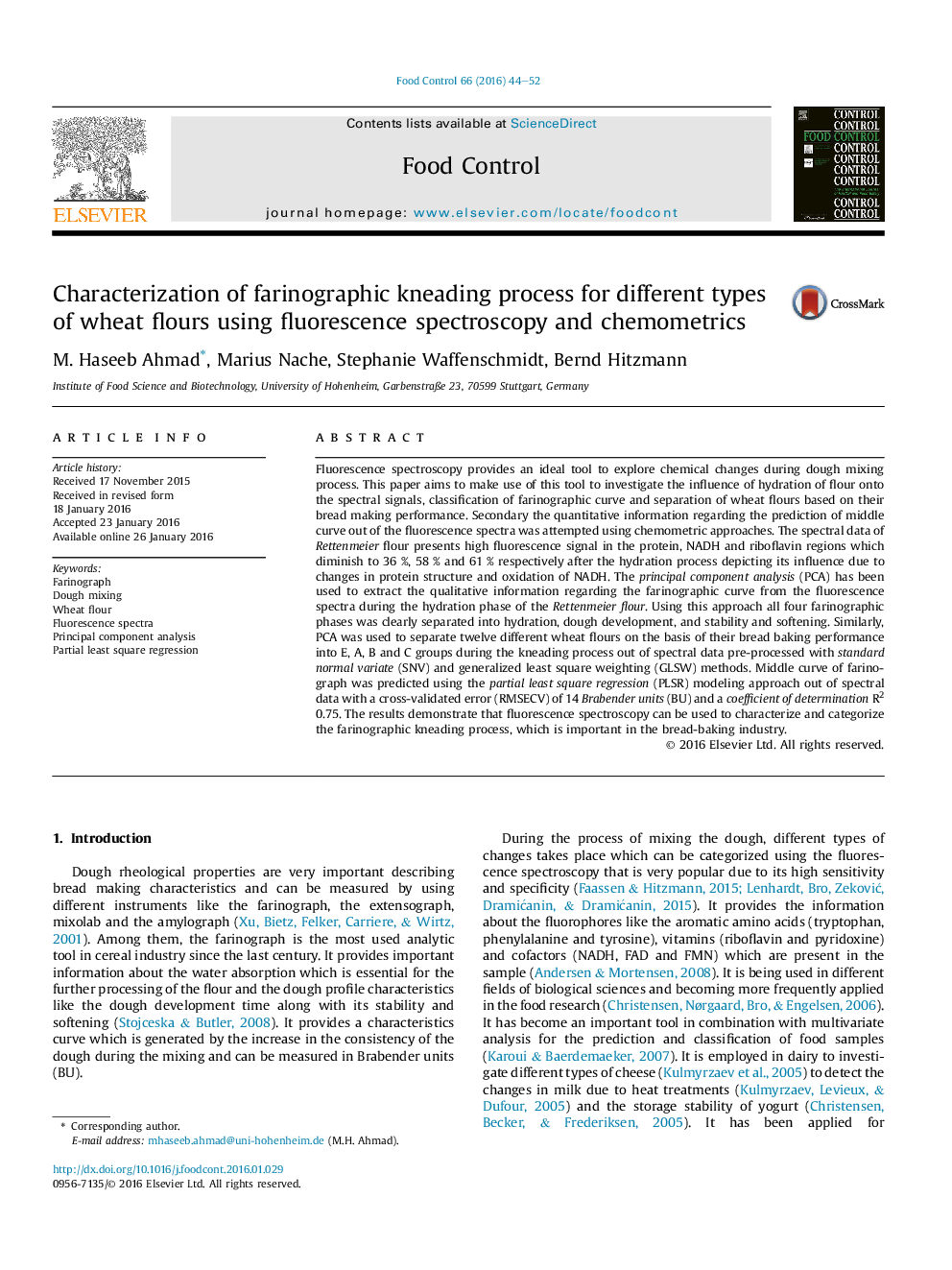| کد مقاله | کد نشریه | سال انتشار | مقاله انگلیسی | نسخه تمام متن |
|---|---|---|---|---|
| 4559173 | 1628396 | 2016 | 9 صفحه PDF | دانلود رایگان |
• Farinographic curve was categorized into four different phases using fluorescence spectroscopy and chemometrics.
• Hydration process of wheat flour has strong impact on the fluorescence.
• Principal component analysis (PCA) differentiate different cultivars of wheat flours during farinographic kneading process.
• Partial least square regression (PLSR) gives a good prediction for middle curve of farinogram of wheat flour.
Fluorescence spectroscopy provides an ideal tool to explore chemical changes during dough mixing process. This paper aims to make use of this tool to investigate the influence of hydration of flour onto the spectral signals, classification of farinographic curve and separation of wheat flours based on their bread making performance. Secondary the quantitative information regarding the prediction of middle curve out of the fluorescence spectra was attempted using chemometric approaches. The spectral data of Rettenmeier flour presents high fluorescence signal in the protein, NADH and riboflavin regions which diminish to 36 %, 58 % and 61 % respectively after the hydration process depicting its influence due to changes in protein structure and oxidation of NADH. The principal component analysis (PCA) has been used to extract the qualitative information regarding the farinographic curve from the fluorescence spectra during the hydration phase of the Rettenmeier flour. Using this approach all four farinographic phases was clearly separated into hydration, dough development, and stability and softening. Similarly, PCA was used to separate twelve different wheat flours on the basis of their bread baking performance into E, A, B and C groups during the kneading process out of spectral data pre-processed with standard normal variate (SNV) and generalized least square weighting (GLSW) methods. Middle curve of farinograph was predicted using the partial least square regression (PLSR) modeling approach out of spectral data with a cross-validated error (RMSECV) of 14 Brabender units (BU) and a coefficient of determination R2 0.75. The results demonstrate that fluorescence spectroscopy can be used to characterize and categorize the farinographic kneading process, which is important in the bread-baking industry.
Journal: Food Control - Volume 66, August 2016, Pages 44–52
